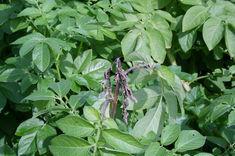
Research teams from both parts of Ireland have got together for the first time to tackle potato blight, a disease that devastated much of the country more than 150 years ago.
The four-year joint research project involves experts from Teagasc, the republic’s farm research and advisory service, and from the Agri-Food and Biosciences Institute of Queen’s University in Belfast. Finance is being provided from a research stimulus fund operated by the Irish department of agriculture and food.
Dr Louise Cooke, who leads the institute’s team, said: “We’re not looking for a silver bullet that will finally eradicate blight, because there isn’t one. We will be looking for ways to minimise the impact of the disease through identifying potato varieties that are most blight resistant, assessing the most effective fungicides and monitoring the arrival of any new strains - and then communicating that information to growers.”
The research initiative is particularly timely, she feels, given the emergence of a new, more aggressive strain of the disease in the UK, and which has now been discovered in Northern Ireland. The strain was first reported in France and the Netherlands in recent years and, while the spread of the disease is primarily airborne, she suggests it may also have arrived in the UK through contaminated seed. “However stringent the seed certification system may be, there can be no 100 per cent guarantees,” she said.
The latest strain, which is resistant to commonly used fungicides, has been found in crops in counties Down and Antrim, with Kerr’s Pink, Maris Piper, Saxon and Sante among the varieties affected.
According to Cooke, the intensive sampling that will now take place as part of the joint research project will establish if the strain has spread further in the north, and also if it has crossed the border into the republic.
At its potato breeding plant in Carlow, Teagasc research staff have been producing blight-resistant varieties such as the popular Rooster and - more recently - Setanta, Orla and Galactica. But the problem is that varieties that are resistant to one strain may be susceptible to another, said Cooke, citing the example of Pentland Dell, a variety once mistakenly thought to be immune to the disease. “That is one of the areas we will be addressing - the capacity of varieties now being bred to cope with the threat of future strains.”
Almost two centuries after the Irish famine, blight is still causing serious damage to potato crops both in these islands and globally.
“Obviously, we know much more about the disease today and we have a variety of weapons with which to fight it,” claims Dr Cooke, “but the emergence of new strains poses fresh problems.”
Last year was a bad year for potato farmers in Ireland and the UK - and a good one for blight, aided by the heavy rain and high humidity in which it thrives. Now growers will be looking to interim reports from the research teams to help them wage a more effective fight against a disease that has already left an indelible mark on Irish history.



